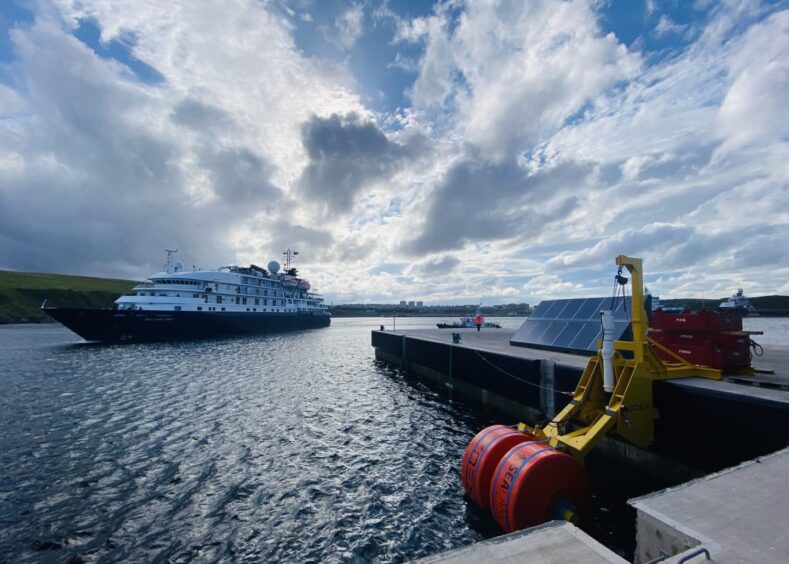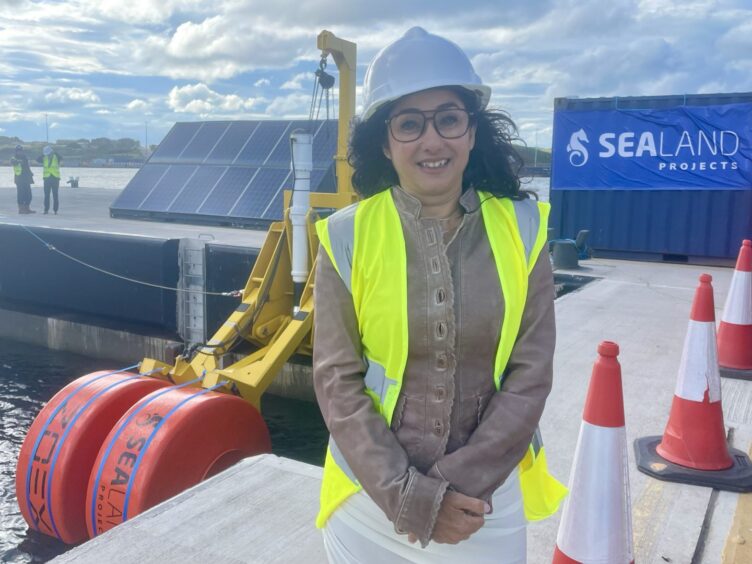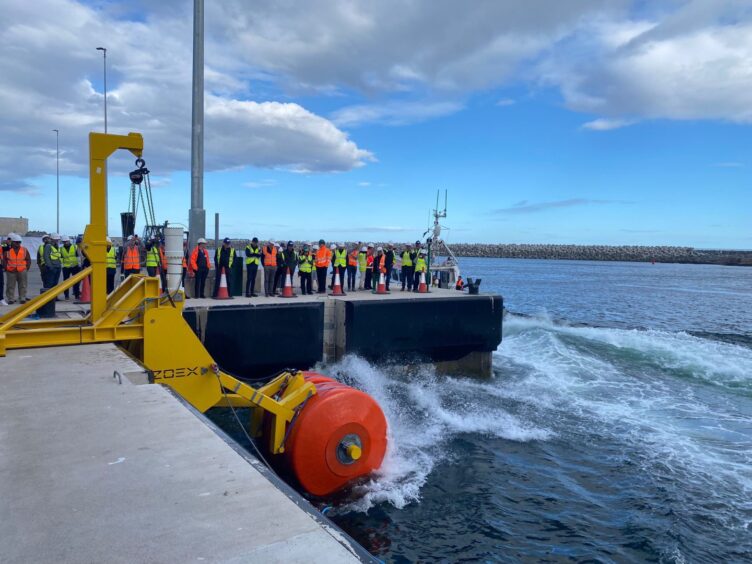
A wave device promising affordable and reliable energy for customers from fish farmers to offshore wind installations has been demonstrated at the Port of Aberdeen.
The ZOEX wave energy converter is the brainchild of award-winning engineer Aslihan Penley, who hailed it as a “break-though in marine renewable energy”.
Penley teamed up teamed up with Aberdeen’s Sealand Projects which carried out the detailed design and developed the concept into reality, including project management, procurement, fabrication, installation and hook-up of the first ZOEX unit.
Fish farming first use
The design and testing of the device has mainly been supported by the aquaculture sector, but it will have wider uses with the potential to replace diesel generators deployed at sea.
She said: “The ZOEX wave energy converter can be mounted directly onto feed-barges, replacing CO2 emitting diesel generators and providing a clean, reliable and robust energy source.
“The ZOEX can also be installed in a variety of different locations, such as breakwaters, harbour, offshore wind turbine mono-piles where its patent-pending double link arm mechanism act as a gearing mechanism to enhance the effectiveness of the power take off system, generating more energy.”
She said the device used tried and tested components but overcame design challenges faced by similar wave energy converters.
“It will survive the storms with that double link arm mechanism and it will also make the generator work more effectively in small sea states.”
Sealand and ZOEX secured support from the Seafood Innovation Fund administered by the Centre for Environment, Fisheries and Aquaculture Science (Cefas) on behalf of the Department for Environment, Food and Rural Affairs (Defra), to develop and built the ZOEX Wave Energy Converter.
Overcoming design flaws
She said the design has overcome historical challenges with similar devices through its use of a mechanism using a double link arm.
Graeme MacDougall, managing director of Sealand, said his firm had been looking for a project to help push the firm further into the renewables sector.
“It’s not always easy to get involved in renewables stuff when your heritage is drawn oil and gas. There are a lot of barriers to overcome,” he said.
“We think we have make big strides to get to there but part of that was to find something that was a bit new, a bit niche and probably going to stretch our engineers.
He added that he wondered if it was going to work on the budget allocated. “But that is what the challenge is, if you don’t explore these things and you don’t take a chance, our engineers don’t grow either.
“We’ve got the experience of working in harsh environments – sometimes in deep water but sometimes in shallow water which can be as much a challenge as the deep stuff.”
He thought the idea was “really simple and it looked like it was going to work.”
He added: “It’s not grid but it could make a difference to some people.”
The first 100kW prototype was commissioned, launched and wet-tested at Port of Aberdeen South Harbour in June.
Penley was the winner of an AccelerateHER award in the clean-tech and climate category and Scottish Enterprise’s Unlocking Ambition award. She has worked on subsea installation operations with the likes of Subsea7, Technip, Aker Solutions and Worley.
Recommended for you


 © Erikka Askeland/DCT Media
© Erikka Askeland/DCT Media © Supplied by Sealand Projects
© Supplied by Sealand Projects